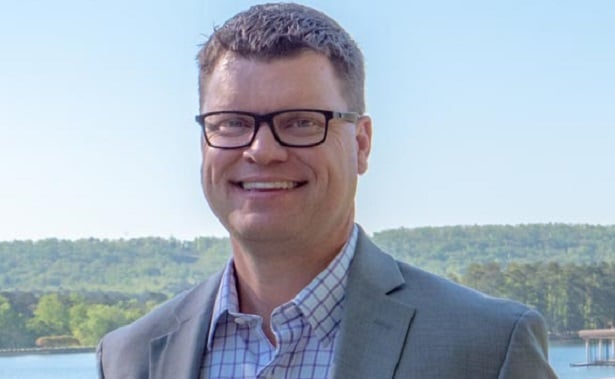As we consider the long-term effects, risks and costs associated with climate change, we can look to actions and solutions in the built environment to mitigate the impact.
One such example is being undertaken by my own alma mater, the Georgia Institute of Technology in Atlanta. The university is just completing construction on the Kendeda Building for Innovative Sustainable Design—which is poised to become the most environmentally advanced education and research building ever constructed in the Southeast.
The building is being built to the rigorous sustainability guidelines of the International Living Future Institute's Living Building Challenge 3.1 standard. This standard has strict criteria for place, water, energy, health and happiness, materials, equity, and beauty with the goal of being environmentally regenerative. The Georgia Tech building is a large-scale experiment in 'net-zero' environmental impact featuring a green roof, a solar panel canopy, cisterns for rainwater collection and reuse, and integrated plantings around the site to provide food for students throughout the year.
Urban heat islands
Instead of simply minimizing energy and water use, a Living Building is designed to implement solutions for a net-positive impact on the environment – producing more energy and water than it consumes. With Georgia's challenging weather, heat and humidity, that's no small task.
Atlanta and its environs have been classified as an urban heat island – a metropolitan area that is significantly warmer than surrounding rural areas. Dense building and ubiquitous concrete generate and retain heat, making city temperatures noticeably higher and even impacting regional rainfall and the length of local growing seasons. This contributes to decreased air quality and distressed ecosystems as warmer water flows into area watersheds.
A Living Building actively combats those effects. Lighter building surfaces reflect more sunlight and absorb less heat. Green roofs and urban forests serve as insulators during warm weather months and the plants that comprise them absorb carbon dioxide and cool their surrounding environment. Recycling rainwater for flushing toilets, planting gardens and trees on rooftops, using natural light to illuminate workspaces, augmenting insulation to decrease energy spent on heating and cooling – all contribute to a more efficient building that can simultaneously be beautiful and inviting.
Waste reduction
Another feature of the Living Building Challenge is the mandate to create very little waste through the construction process. The Kendeda Building site is located within seven acres of what was mainly surface parking. The immediate area around the building will be converted to a park that mirrors the original topography from 100 years ago. Anything removed to make way for the building and its landscaping, including the former parking surface, has been salvaged, recycled, or turned into another usable product. The recycling process can't include combustion.
Reclaimed materials
Many salvaged items, including original joists pulled from the recent university Tech Tower renovation, will be incorporated into the design as a Living Building Challenge building must incorporate one salvaged material per 500 square meters of gross building area. That works out to 10 salvaged materials for the Kendeda Building. Here are some of the salvaged materials selected for use.
- Slate shingles from the roof of the Georgia Tech Alumni Association building will be used as on the walls and floors of shower rooms and restrooms.
- Two-by-fours from dismantled movie sets, including the show "24" and movie "Rampage", were used in the nail-laminated floor decks. Nearly 500, 10-by-six-foot flooring units were assembled by workers from the community, hired — as part of the Kendeda Building's Equity Petal — through the Georgia Works training program.
- Stone Mountain granite curbs from the Georgia State Archives Building will be used as the curb around a constructed wetland at the main entrance.
- Heart pine joists that were initially part of Tech Tower — one of two campus' two original buildings dating back to 1888 will be converted to treads for the Kendeda Building's monumental staircase.
- Lumber from storm-felled trees on Georgia Tech's campus was kiln-dried, milled and planned to make counters and benches inside the building.
- Wood planks and joists from a former church on 10th Street in Atlanta were used on decorative walls and the ADA ramp centered in the open student commons area.
Collaboration, creativity and replication
There are a number of important takeaways from this and other Living Building Challenge projects. We've learned to remain open and embrace the creative building process because big idea projects such as this are unique and no two buildings are alike. Not every project can hope to generate zero waste and produce more energy than it uses, but finding ways to implement some of these strategies can go a long way toward making every new or renovated building more energy efficient, environmentally responsible, and resilient.
The outcome of this project will be more than just a building; it represents a living, learning laboratory for hands-on educational and research opportunities that will be a model for the region and for similar environments around the world. On a campus dedicated to training future engineers, planners, architects, and construction professionals, it is a working endeavor to educate and transform thinking with ripple effects that will reach far beyond the campus alone. The project is on track for occupancy later this year, with its Living Building certification after a year of use in 2020.
The Living Building project at Georgia Tech was financed by a private grant from The Kendeda Fund. It was designed by Lord Aeck Sargent and The Miller Hull Partnership and Skanska Building USA served as the project manager. This project brings Skanska's current experience on LBC projects to seven, including two projects constructed and fully certified, and five others in various design phases.
Scott Cannon is general manager and executive vice president at Skanska USA.
© 2025 ALM Global, LLC, All Rights Reserved. Request academic re-use from www.copyright.com. All other uses, submit a request to [email protected]. For more information visit Asset & Logo Licensing.








